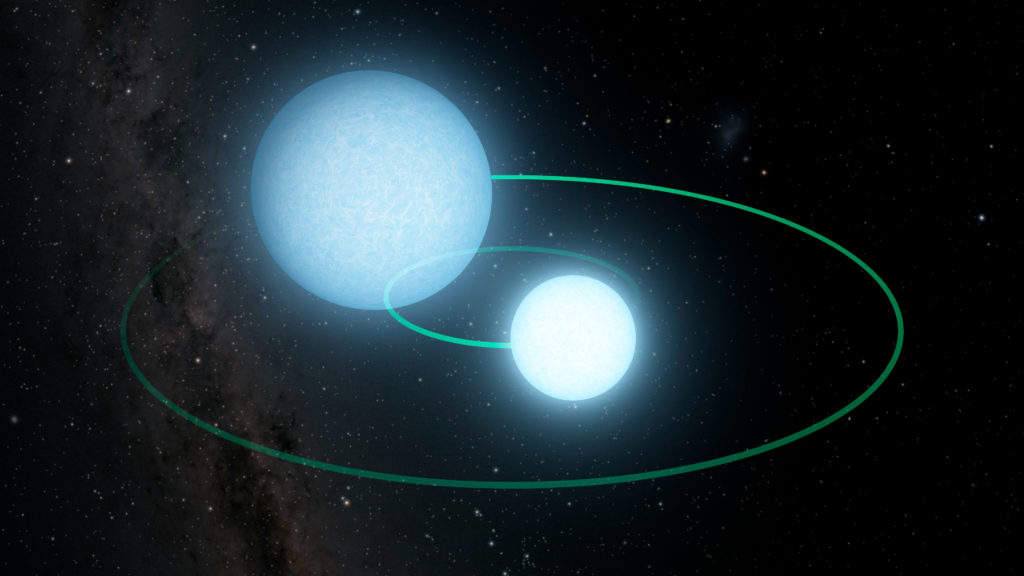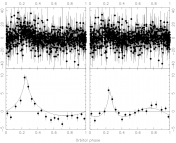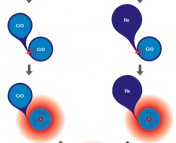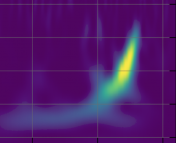Title: General Relativistic Orbital Decay in a Seven-Minute-Orbital-Period Eclipsing Binary System
Authors: Kevin B. Burdge, Michael W. Coughlin, Jim Fuller, Thomas Kupfer, Eric C. Bellm, Lars Bildsten, Matthew J. Graham, David L. Kaplan, Jan van Roestel, Richard G. Dekany, Dmitry A. Duev, Michael Feeney, Matteo Giomi, George Helou, Stephen Kaye, Russ R. Laher, Ashish A. Mahabal, Frank J. Masci, Reed Riddle, David L. Shupe, Maayane T. Soumagnac, Roger M. Smith, Paula Szkody, Richard Walters, S. R. Kulkarni, Thomas A. Prince
First author’s institution: Division of Physics, Mathematics and Astronomy, California Institute of Technology
Journal: Accepted to Nature Letters (closed access). Open access on ArXiv.
The Extremes of Binary Stars
50% of all stars form with a friend. However, within the multitude of stellar relationships in the universe, eclipsing white dwarf binaries are one of the most intensely dynamic (Figure 1). Each star in this configuration is the remnant of a sun-like star that has violently shed its outer hydrogen/helium layers to leave behind a compact stellar core. The white dwarf star that is created is approximately the mass of our sun, yet squeezed down to the size of Earth in diameter! Fascinating in their singularity, these stellar structures, when orbiting each other at an increasing rate, create some of the most extreme physics in the universe. Unlike studies of stable white dwarf systems, these eclipsing binaries provide a rare, yet highly precise, test of white dwarf structure including the uncertain relationship between their mass and radius. Observing these rapidly revolving binary systems lets us probe uncharted territory in orbital dynamics, binary star evolution and gravitational wave physics.

Orbit in a Haystack
We know that binary white dwarfs can orbit each other in less than ten minutes — it takes more time to scroll to the bottom of our social media of choice, recap the weekend with a friend or enjoy a bag of chips. So, amongst the billions of twinkling stars in the Milky Way, how can we find an elusive binary system whose brightness changes on such a fleeting timescale? Well, you need a powerful telescope that scans the sky all night, every night. And such a survey exists! The Zwicky Transient Factory (ZTF) observes the entire northern sky and collects data on as many stars as possible. Combing through the light curves of 20 million stars with periodic changes in brightness, the authors of today’s paper found a hidden gem called ZTF J1539+5027, an eclipsing white dwarf binary with an orbital period of only 6.91 minutes.
Upon discovery, the team set to work modeling the physical characteristics of each white dwarf in this system. The orbital period (Figure 2) proved that the binary consisted of a larger, primary white dwarf (0.6 M⊙) accompanied by a smaller, secondary companion (0.2 M⊙). A temperature of ∼50,000 Kelvin was estimated from an optical spectrum, which also revealed the carbon/oxygen composition of the primary and pure helium structure of the secondary.

Orbital Decay in Einstein’s Gravity
It is predicted by general relativity that compact binary systems like ZTF J1539+5027 will emit radiation in the form of gravitational waves. This occurs as these highly dense objects continue to in-spiral towards one another, tightening their orbit and producing substantial ripples in the curvature of space-time. The authors test this by mapping the orbital decay of ZTF J1539+5027 with archival data, which proved that the orbital period has been decreasing steadily since 2009 (Figure 3a). This is in direct accordance with the principles of general relativity. Another win for Einstein! Furthermore, using the modeled parameters of the binary, the authors quantified the amount of gravitational radiation being emitted by ZTF J1539+5027 at a certain frequency (Figure 3b).

The Future of Eclipsing Binaries
Now that we know this system’s intriguing physical characteristics, what’s next for ZTF J1539+5027? In the near future, this system will be one of the most ideal candidates to study with the Laser Interferometer Space Antenna (LISA). Planned to launch in 2034, LISA will be a 2.5 million-kilometer-wide laser in space that will detect gravitational waves. Similar to how we observe black hole mergers with LIGO, LISA will be sensitive to a whole new range of frequencies and gravitational wave sources. In anticipation of future observations, the authors calculate the gravitational wave frequency of ZTF J1539+5027 to be 4.8 mHz, which is almost exactly the frequency of LISA’s peak sensitivity!
There are a variety of proposed outcomes for the compact friendship within ZTF J1539+5027. The system’s orbital decay will continue for about 130,000 years, until the orbital period is approximately 5 minutes long. At this point the secondary will expand in size, giving a substantial amount of its mass to the primary. This is when predictions become more imprecise: the white dwarfs could either merge to form a larger R Coronae Borealis star (most likely) or collide and detonate as a thermonuclear supernova explosion (less likely). Since we cannot wait around for >100,000 years, discovering more of these extreme binaries will be the ultimate test of compact binary evolution and the production of gravitational waves.





What a great article! I am so intrigued